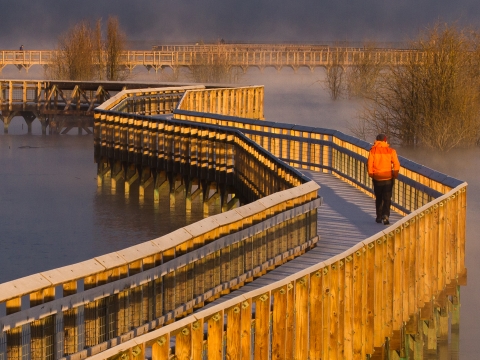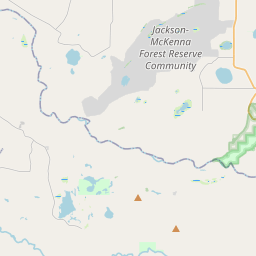Visit Us
Our site is open every day sunrise to sunset. The office is open Monday-Friday, 9 a.m.-4 p.m.; and the visitor center is open Wed.-Sunday 9 a.m.-4 p.m. With easy access off Interstate 5 in Olympia, Washington, Billy Frank Jr. Nisqually National Wildlife Refuge is the destination to connect with nature. Year-round trails meander through a diversity of habitats, and visitors can experience exceptional wildlife viewing opportunities. Exhibits in the Visitor Center provide an overview of the Nisqually River Delta, and volunteers provide updated wildlife sightings. A highlight for your visit is walking the mile-long Nisqually Estuary Boardwalk that extends over the estuary, making each visit different with the fluctuating tide.
Want to bring an educational group for a field trip? Take a look at options on our Education page.
Location and Contact Information
- Billy Frank Jr. Nisqually National Wildlife RefugeView Details100 Brown Farm Road Olympia, WA 98516-2302
About Us
Billy Frank Jr. Nisqually National Wildlife Refuge was established in 1974 to protect the Nisqually River Delta from development for the benefit of fish, wildlife, and plants, especially migratory birds. The diversity of habitats hosts at least 250 species of birds and other wildlife including: insects, fish, amphibians, reptiles, and mammals. Habitat management enhances freshwater wetlands to meet migratory bird requirements but also offers exceptional viewing, nature and landscape photography opportunities. The refuge offers activities for visitors to learn the natural and cultural history of the area with guided walks, seasonal lectures, annual festivals, and environmental education for school groups.
What We Do
The National Wildlife Refuge System is a network of lands and waters managed by the U.S. Fish and Wildlife Service. Wildlife conservation is at the heart of the refuge system. It directs our decisions and actions from the purpose of the refuge establishment, to the recreational activities we provide, and the resource management tools we use. The management tools used are aimed at ensuring a balanced conservation approach where both wildlife and people will benefit.
Our Organization
Our Species
Billy Frank Jr. Nisqually National Wildlife Refuge has become an increasingly important place for wildlife, especially migratory birds. Birds on their north and south migrations use the refuge as a stopover to feed and rest before continuing on their flight. For others, it's the end of their journey and a place to spend winter. Songbirds arriving in the spring find places to nest and raise their young, and for resident birds, it's a year-round home. The refuge has recorded at least 250 species of birds, 95 species of fish, 7 species of amphibians, and 60 insect species.
Get Involved
Whether you want to further conservation, learn more about nature, or share your love of the outdoors, you've come to the right place! The U.S. Fish and Wildlife Service at Billy Frank Jr. Nisqually National Wildlife Refuge needs you: your talents, your enthusiasm, and some of your time. If you enjoy working with people, and appreciate and are concerned about our nation's natural resources, our program may interest you.
Projects and Research
The refuge prioritizes projects that contribute to the enhancement, protection, use, preservation, and management of native wildlife populations and their habitats in their natural diversity. Research and studies that provide scientific data upon which decisions regarding management may be based are of value to maximize our efforts for wildlife. Partnerships are essential for shared goals and resources; this was most evident to accomplish the largest estuary restoration project in the Pacific Northwest in 2009.
























